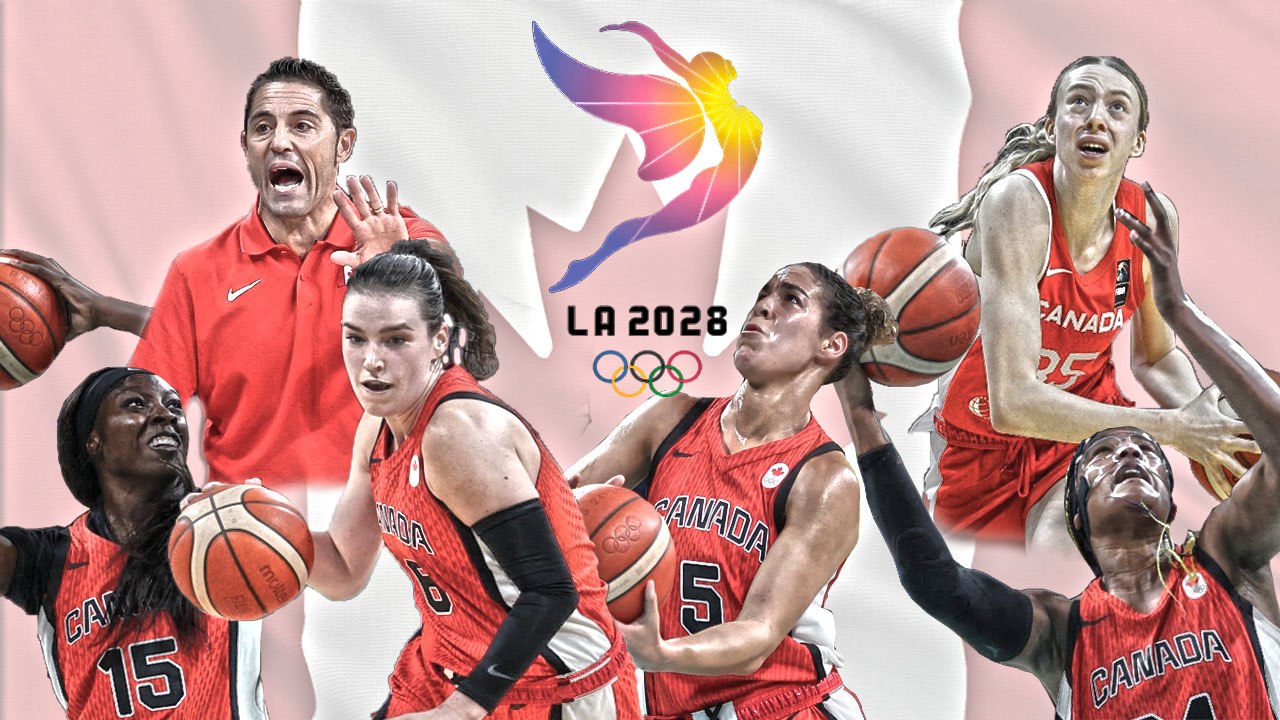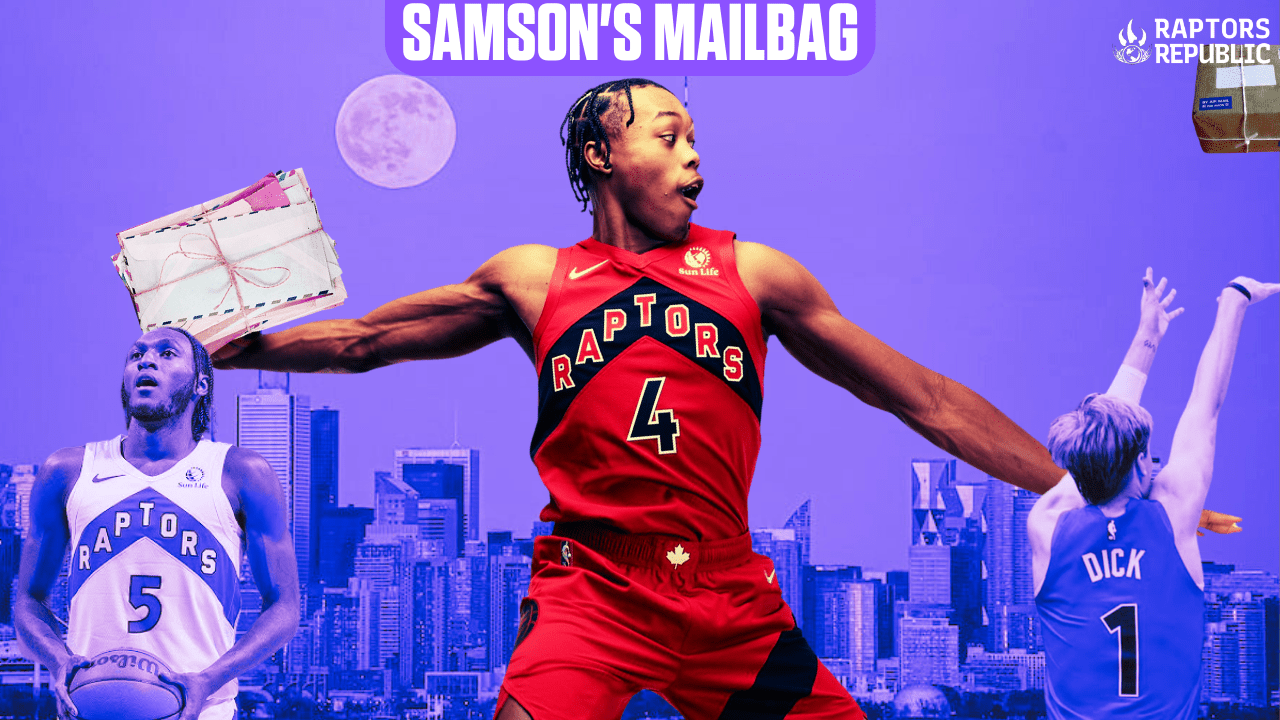Summers are meant to build unforgettable memories, memories that might have the capability to dictate when a summer begins and when a summer ends. In terms of women’s hoops, Canada saw this summer showing up earlier, with Toronto witnessing a much-expected and glamourous announcement of the first Canadian WNBA team late in the bright sunshine May.
But it turns out the summer wrapped up earlier than expected, too, with Natalie Achonwa raining tears. In what will be remembered as a defining and gut-wrenching memory, the 31-year-old captain just let her deep sadness out after the dramatic elimination of Canada in the Paris Olympics, knowing that she had just played her last game with the national team.
The Canadians were far from winning a medal, which was their hope. They were coming off clinching the bronze in the 2023 FIBA AmeriCup and finishing fourth in the 2022 World Cup, but left the French capital getting swept, with an awful 0-3 record after the defeats against Australia (70-65), host France (75-54), and Nigeria (79-70).
The retirement of Achonwa from the national team felt like a painful breakup after 16 years with the maple leaf crossing her chest. Non-stop tears streamed down her face like the incessant rain of one of these merciless storms that usually kill the summer.
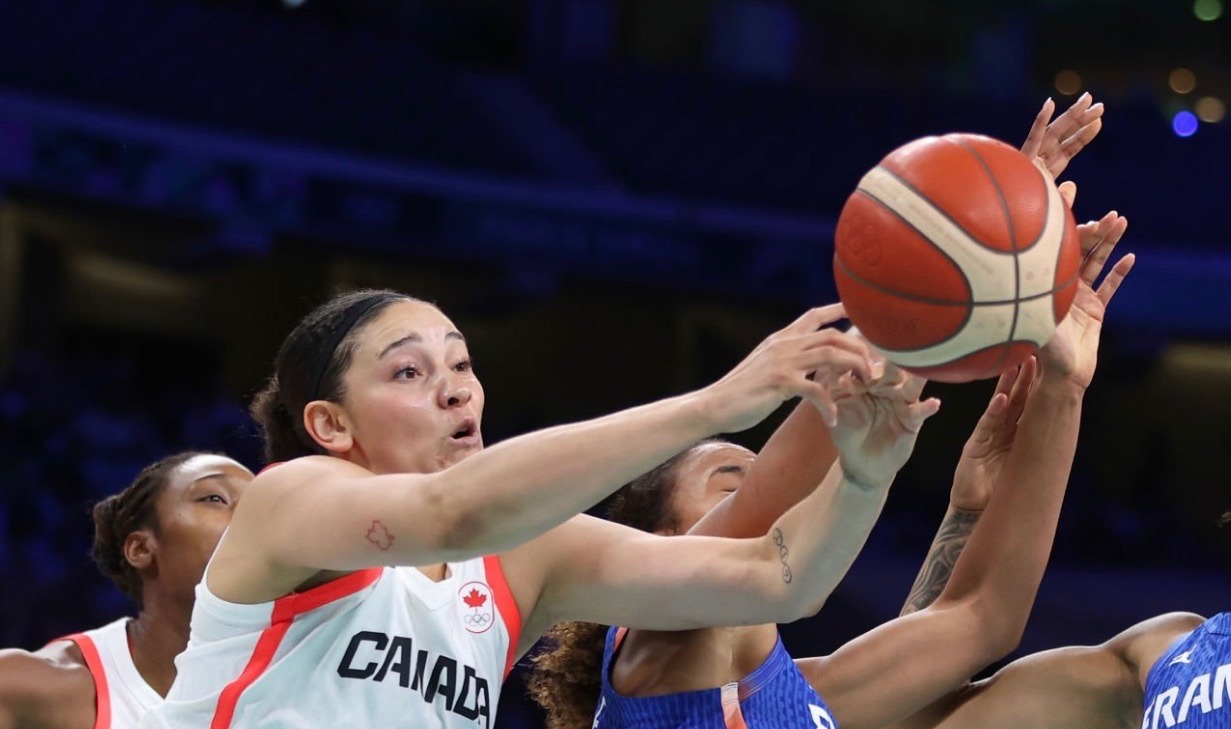
But the forward sparked some strong hopes about a powerful comeback of a summer — one that promises to be long considering what is blossoming.
“Have you seen our younger teams? Have you seen those that are coming up next? Be afraid,” Achonwa said to CBC after an Olympic run that saw the debut of up to four players as Olympians Yvonne Ejim, Sami Hill, Cassandre Prosper, and Syla Swords.
With the emotions aside after almost one month, Canada’s coach Victor Lapeña agrees with what Achonwa said in floods of tears while looking becalmed towards the Mediterranean Sea. He is enjoying his last vacation days in Tarragona, but also putting the Olympics into perspective.
“Our future is wonderful,” he said. “But we have to take some steps. As long as we don’t take them, it will take a little bit.”
The elimination in the group stage after the recent achievements was and still is a hard-to-swallow pill, especially taking into account the Canadians being ranked fifth in the world. However, starting with the optimism of the former captain and Lapeña, Canada can begin to build success on the disappointment. What is left is not ashes, but open flames and glimpses to take up the torch in Los Angeles in 2028.
“I’m not happy, I didn’t enjoy as I did at other times, and I didn’t feel identified with the basketball style I wanted to play. We lacked more time together and tactical and physical preparation, although they strived. But, at the same time, we have a good base, especially youngsters, they had a good performance when they played. Swords, Prosper, Amihere… it was exciting to see them play,” said Lapeña.
“Then, we have a group of players like Bridget (Carleton) and Kia (Nurse). In four years they will be between 31 and 33 years old. If they keep a good shape and keep competing, they can make it, it’s still a good age in today’s basketball,” said the Spaniard, who has a contract until 2026. He will hold a meeting with Canada Basketball in September to start the next Olympic cycle.

Achonwa will be a transcendent absence in L.A. for her role on the court, but also her leadership and significance in the locker room. Collective feats aside, the 31-year-old forward has the all-time record for assists for a Canadian player in the Olympics with 43 and is the Olympian with most games played with 18.
Nurse and Carleton are meant to inherit her role in terms of leadership on and off the court and are expected to be the two main faces of the national team. Shay Colley is another key piece in her early 30s in the next Olympics, at 32.
If we take a look at the rest of the roster that played in Paris, Kayla Alexander will be the most veteran in Los Angeles at 37 followed by Nirra Fields (34) and Sami Hill (34). Two rising WNBA players Laeticia Amihere and Aaliyah Edwards should be in the first years of their primes at 27 and 26 years old. Yvonne Ejim will guarantee the presence of Ejim in the Olympics, even if her brother Melvin doesn’t make it. The Gonzaga Bulldogs power forward will be 26 years old in L.A.
The squad Canada took to Paris was so young that even some players would still be ‘the future’ in 2028. It’s the case for both Cassandre Prosper and Syla Swords, who will be 23 and 22 years old in 2028. Both could feature nice and inspiring fraternal stories with the maple leaf on the chest. While Prosper’s brother and Mavericks player Oliver is one of the most interesting prospects for the men’s team, Syla’s sister Savannah is one of the stars of the U17 Canadian team that won the silver medal in the World Championship in July.
Tons of talent coming up
Canada’s youth teams are just a pool of exuberant talent, and Lapeña loved what he saw from the U17 team but also from the U18 team and its silver in the FIBA AmeriCup, played this summer as well.
“They looked really good,” the senior’s team coach said.
Canada is spoiled for choice in the backcourt. Jasmine Bascoe, a point guard, was one of the sensations of the last FIBA AmeriCup, making the First Team of the tournament.
But sneaky Bascoe belongs to that group of players capable of captivating beyond numbers. She showcased an awesome array of skills, like her ability to go downhill, shooting from midrange and the perimeter, and a variety of finishes including the floater and the use of the eurostep. Canada also benefited from her playmaking, although efficiency shooting overall is the big pending subject for the 18-year-old point guard, as she went 36 per cent from the field and 30 per cent from deep. Bascoe was called up by Lapeña for training camp for the Olympics in Edmonton, not eventually making the final list.
Olivia Leung, on the same U18 team as Bascoe, emerges as another good alternative in the backcourt. The point guard also demonstrated a good ability to penetrate and finish, averaging 8 points and 3.5 rebounds in 20 minutes. Leung, who went 36.6 per cent from the field and 27 per cent from the perimeter, will play for the University of Dalton in the Division I of the NCAA this upcoming season.
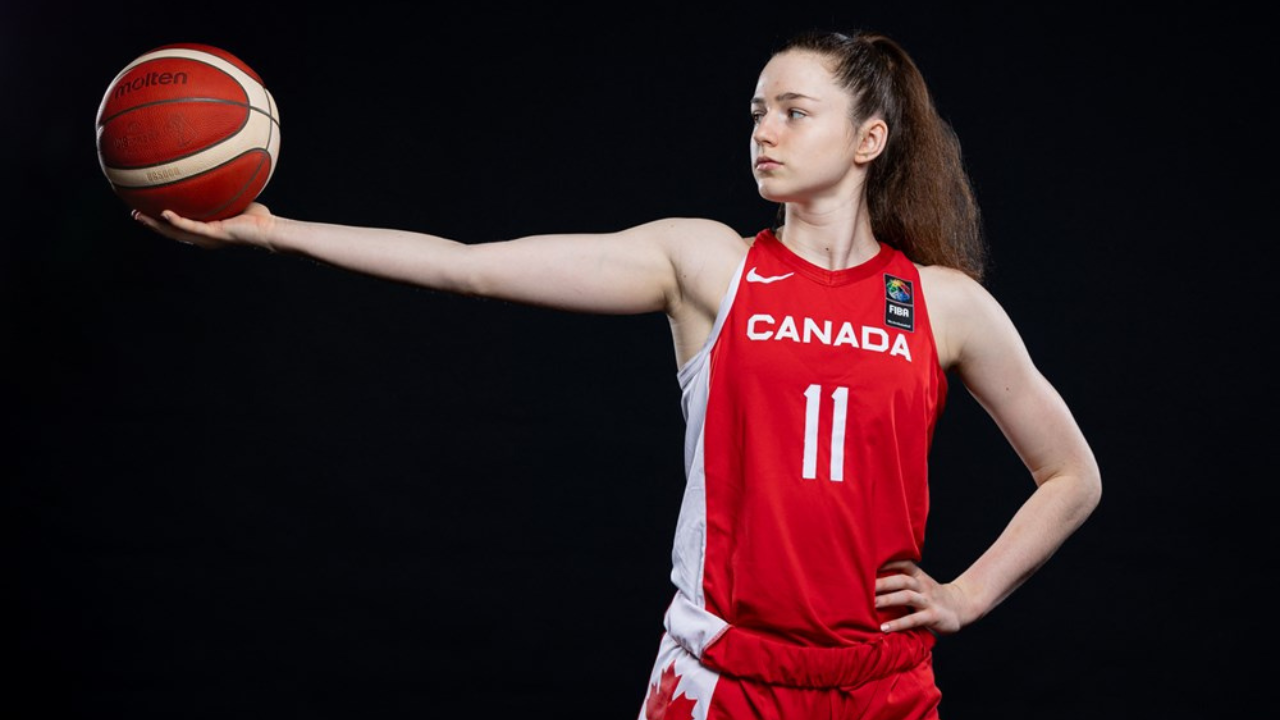
But the U17 Canadian team also featured intriguing prospects when it comes to ball handlers, especially Agot Makeer, who made First Team of the World Cup. Standing at 6 feet, the Thunder Bay point guard showed off, averaging 17.7 points, 7 rebounds, 2.4 assists, 4 steals, and 1 block in 26 minutes of play.
Makeer’s talent to play off the ball can’t be overlooked, as well as her shooting efficiency, finishing 48 percent from the field on 13 attempts per game and a very decent 34 percent on deep. Canada needs more firepower from the perimeter since the senior team just shot 28.8 per cent from deep in the Olympics despite having sharpshooter Carleton.
Although Makeer is on her way to stardom, the great performance of another great point guard Deniya Prawl can’t be overlooked. Prawl averaged 12 points, 7.6 rebounds and 3.7 assists in 27 minutes, and also displayed a broad variety of virtues. The Toronto native showcased a quick first step, skills to finish with both hands and a superb ability to create her own shots in different situations. Prawl, playing for the IMG Academy, is another of the top prospects of the 2025 class.
Nevertheless, Savannah Swords was the most impactful player in the silver medal in the World Cup in terms of plus/minus (+20). The forward was the second scorer for Canada, averaging 16.3 points, 6 rebounds and 2.3 assists per game on excellent efficiency.
Besides positioning herself as one more alternative to boost Canada’s shooting, Swords shined as a playmaker. She might not be the fastest or the strongest, but the forward can dictate the pace of the play when she can’t get to the rim or shoot. The 16-year-old player, standing at 6 feet, is currently attending High School at Long Island Lutheran in Brookville (New York). His father, former player Shawn Swords, serves as the head coach of the Long Island Nets, the G-League affiliate team of the Brooklyn Nets.
Nyadieng Yiech, playing for Fort Erie International Academy, has been another forward who has proved herself as another potential reliable shooter for the future in the U18 AmeriCup, averaging 12.5 points to go with a magnificent 43.5 percent on threes on four attempts per game.
Of course, Canada also features talent aplenty outside the U17 and U18 teams and Toby Fournier (2005) is among the first names on the list. The forward, who made the world aware of her by dunking at 14 years old, plays for Duke University and was part of the team that won the bronze medal in the U19 World Cup last year. The roster also featured Delaney Gibb (2005), a point guard with good shooting, Prosper, Bascoe, and Syla Swords.
With such a high number of ball handlers and wings and more and more coming, Yvonne Ejim and Aaliyah Edwards would cover the power forward position along with another option like Niyah Becker, standing at 6 foot 2. Playing for Kutxabank Araski in Spain, Becker will be 27 years old in Los Angeles and participated in the training camp.
There are more unknowns around the center position. Kayla Alexander will be 37 years old in the next Olympics, and there aren’t so many prospects as is the case in the backcourt. While Emily Potter, who will be 33 in L.A. and was part of training camp, is another option, Phillipina Key is the most promising youngster. She also was with the national team before the final cut in the list and will be 24 years old in the next Olympics. Standing at 6 foot 8, Key plays for the University of Oregon.
Players need to prepare themselves better to build chemistry
Canada has talent. However, the complex but all-important question is how to manage all this quality and build on a structure and a plan to keep the team consistently on top. Before the 2028 Olympics, the Canadians will face the 2025 FIBA AmeriCup and the 2026 World Cup.
Lapeña is very clear about the first thing Canada has to pay attention to, the first necessary step to address the lack of physical and tactical preparation mentioned by the coach. The lack of chemistry on the floor was evident.
“In the Olympics there used to be a team weaker than everybody else, but it wasn’t the case in Paris. In the Olympics, players focus on their national teams above all, and this is the [lesson] we take. If you want to compete and fight for a medal you have to come very well prepared and put all your focus in this competition. It’s what we lacked,” the coach said.
Lapeña talked openly about the problem of not having the four WNBA players Carleton, Nurse, Amihere, and Edwards available until one week before the Olympics.
“I respect the decisions of Canadian players a lot. Each one has her business and WNBA contracts. After all, they don’t get a big remuneration to be in the national team unlike other countries like Spain, France, the U.S., or Australia, who pay very well. Canadian players get money but not to make up for it in a way they can quit their WNBA contract and focus 100 percent on the national team. That’s what I would like.
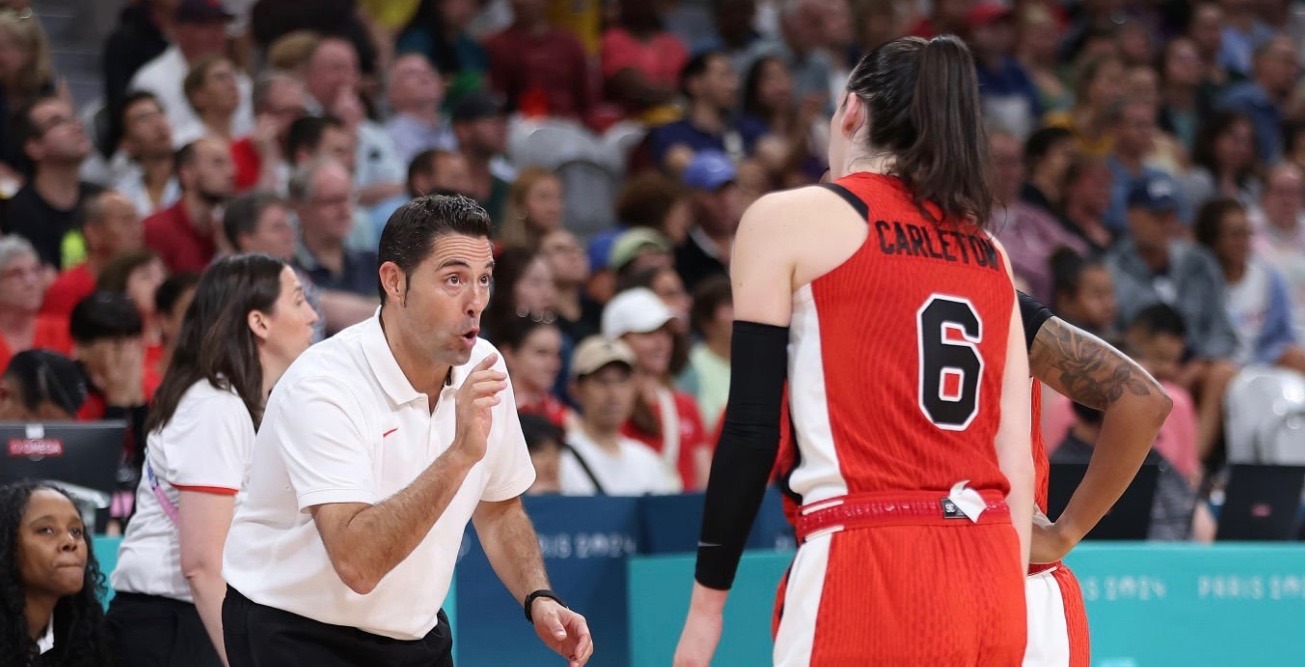
“If the players decide on playing in the WNBA there’s nothing you can do. France is the most clear example, Gaby Williams and Marine Johannès have WNBA contracts and relished them to focus on the Olympics,” said Lapeña mentioning the case of the French national team, which was close to ending the reign of Team USA.
“We have to work in Canada Basketball to find the best way to motivate the players, especially in Olympic years, being focused on the national team from the beginning. We have to spend 30 or 40 days training together, having good preparation, and motivating them in order [that] they compete professionally throughout the year. We had some players who didn’t play at a professional level and we noticed it, but that doesn’t mean they didn’t make a huge effort to compete in the best possible conditions,” Lapeña said.
Because of the lack of time to assemble the team and to build on certain schemes and set plays for the half-court offence, the Spaniard wanted to implement in the Olympics a game style based on a solid defence to get out in transition or trying to score in early possessions.
However, Canada missed a consistent identity, and the evident lack of chemistry expressed itself through several issues. The Canadians struggled in their half-court offence, seeing problems to reset or redirect plays if an advantage wasn’t created early or the original set didn’t work out. Poor shooting didn’t help either.
The national team piled on turnovers with up to 22 per game, finishing as the team of the tournament leading this stat. The shortage of communication also manifested itself in defence as Canada struggled in its rotations and was vulnerable from the perimeter. The Canadians showcased all their weaknesses at the same time in the second quarter of the game against France, which saw the team getting punched with a terrible 23-2 run.
“The ideal thing would be to relish playing in the WNBA the year of the Olympics to come with the national team from the first day“
Victor Lapeña
“The group tried its best, but we couldn’t play transition so fluently as other times, we couldn’t defend with the same level of intensity, had some deficiencies in one-on-one defence. We weren’t a good team defensively,” Lapeña said.
“Teams like France, Australia, Spain, USA, etc. were in a great physical shape or, at least, competitive. That’s what we missed, we didn’t have enough team to get ourselves ready because the WNBA players came just one week before. We had options to defeat Australia, who came to bronze, and Nigeria. With a team that had spent more time together and had prepared better with all the girls competing in professional leagues during the year, Canada would have made it to the quarter-final and competed for medaling,” he said.
“It’s true our group was very tough. But luck is like that,” Lapeña said.
Besides the late incorporation of the WNBA players, the competitive inactivity of some players was another issue in creating chemistry and team habits on the court, as Lapeña said. Achonwa, Amihere, Edwards, and Nurse didn’t compete until May, when the WNBA season started, and Ejim, Prosper, and Swords hadn’t played since March, when the NCAA season ended.
“It was fascinating to see play youngsters such as Swords, Prosper, or Amihere, who barely is playing in the WNBA and came here a few days before the Olympics, we couldn’t ask her for more. All of us realized we lacked preparation, and them too. I would advise Aaliyah [Edwards] and Amihere to go to play in Europe, Australia, or China, that will give a lot of tactical and technical background to them, and they are aware of it,” the coach said.
“But I’m very proud of coaching these girls, I’ve always felt at ease, the Olympics were a disappointment for all of us. I want to see what advantages and [lessons] we take from these problems, I hope this result has been good for us to learn. We have time until 2028 to fix it. We have the AmeriCup in 2025, the World Cup in 2026, there’s a lot of going on ahead and the program is growing,” he said.
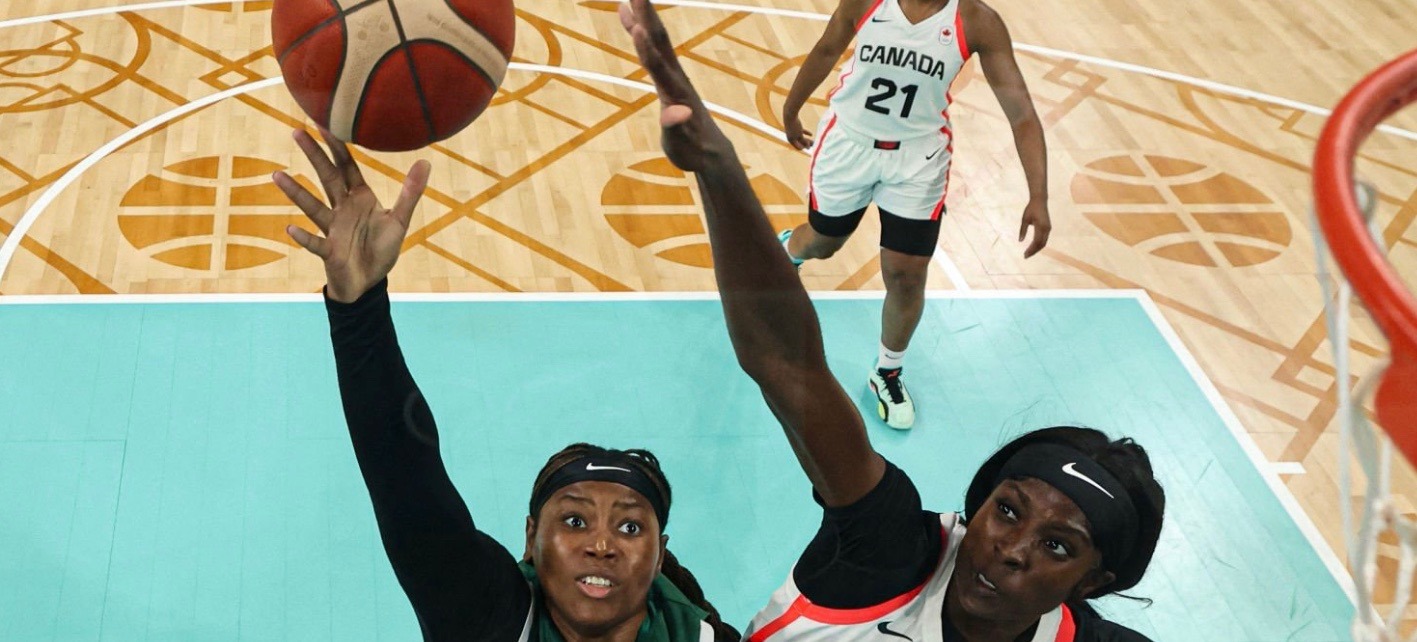
The women’s team’s coach also touched on the nationalization of players as another step that Canada has to take to keep progressing. Nationalizing certain players that can’t play for their home countries is a valuable resource to solve problems such as injuries or the shortage of pieces to cover specific positions.
“Teams with nationalized players is another important factor, and Canada might play with a handicap. France has Williams, who is American, and you also have Spain with the cases of Gustafson and Ndour, or Germany with Peterson. We have to value that, which position we can somehow reinforce to keep up with others. Otherwise, that will be a disadvantage. I want to [say] that to them [Canada Basketball], and they know,” said Lapeña, who took over the team in 2022.
Canada Basketball CEO Michael Barlett acknowledged in an interview with Michael Grange for Sportsnet they are seriously considering this scenario, although he also recognized in Canada the naturalization process is more complex than in other countries due to government requirements.
“I’ll keep working with Canada Basketball while Barlett is in charge. I feel very identified with him and his vision of the future,” Lapeña said.
But, according to the national team coach, there is still another basic pending subject for Canada to speed up the growth of women’s basketball.
“In the two years I’ve been here [working for Canada Basketball] we’ve done a great job in terms of preparing the players to compete and preparing coaching staffs. We have very good athletes and we have to give them the experience they need. We could complete that by having a professional league in Canada, which is one of our biggest handicaps compared to countries like Australia, France, or Spain,” he said.
“We are encouraging high school players to compete when there aren’t competitions for their age by sending them to Europe to play exhibition tournaments. It’s good they can compete with their universities, but they should have the option to compete at a professional level in their country. It would be motivating for them,” Lapeña said.
The new WNBA franchise in Toronto, set to start to compete in 2026, is thus a necessary luxury, and it might allow more Canadian players to make it to the best basketball league.
“If we take all these steps, our future is gorgeous,” Lapeña said.
Summer might have shut down suddenly with the disappointing winds blowing from Paris, but it’s still spring for the blossoming Canadian women’s basketball. The real summer is coming.

